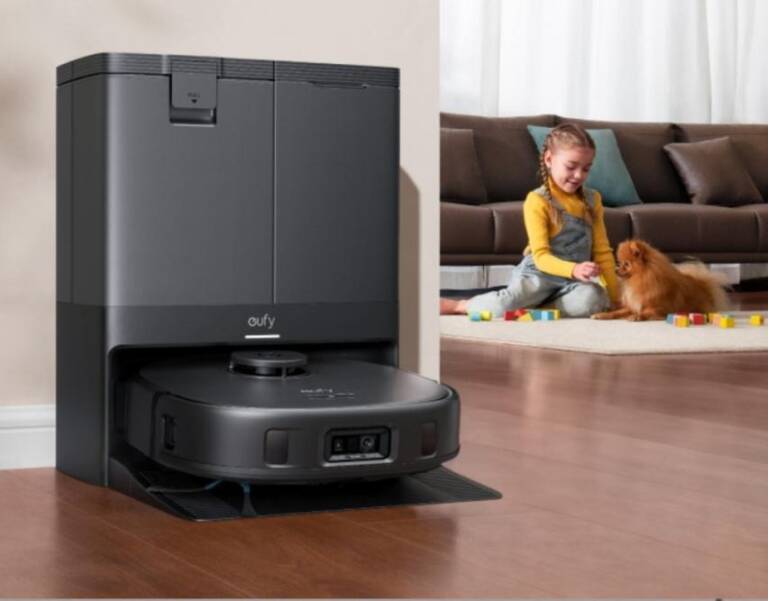Many think fleet cards just handle fuel payments, but the truth is they’re comprehensive management tools that transform how businesses track, control, and optimize vehicle expenses. Here’s why these payment solutions have become essential for operations ranging from small delivery services to enterprise transportation networks, offering Learn more from Esso for fleet cards benefits that extend far beyond the pump.
What is a fleet card?
A fleet card is a specialized payment solution designed for businesses managing multiple vehicles. Unlike standard credit cards, these tools provide detailed transaction data, purchase controls, and reporting capabilities specifically tailored for vehicle-related expenses. They work at fuel stations nationwide, but also cover maintenance, repairs, and increasingly, EV charging stations.
The cards function as both a payment method and a data collection system, capturing driver information, vehicle details, odometer readings, and purchase locations with every transaction. This data feeds into management platforms that help businesses monitor spending, detect anomalies, and optimize operations in real-time.
Why fleet cards are essential in today’s vehicle operations
Myth-buster: Many think fleet cards only cover fuel, but the truth is they enable tracking, control, reporting, and efficiency improvements vital to modern fleet management
The misconception that these solutions merely facilitate fuel purchases overlooks their role as comprehensive expense management systems. Today’s cards integrate with telematics, accounting software, and mobile apps to provide a complete view of vehicle operations. They capture maintenance schedules, monitor driver behavior, flag unusual transactions, and even help with tax reporting through automated expense categorization.
For businesses managing multiple vehicles, the ability to set spending limits by driver, restrict purchases to specific locations or times, and receive instant alerts about suspicious activity has become indispensable. This level of control simply isn’t possible with traditional payment methods or manual expense tracking systems.
Core features of fleet cards
Detailed tracking and reporting for fuel, expenses, maintenance, and driver activity
Modern card platforms capture extensive data with each transaction, including gallons purchased, price per gallon, odometer readings, and driver identification. This information flows into customizable dashboards where managers can spot trends, identify inefficiencies, and make data-driven decisions about vehicle usage and replacement schedules.
Reporting tools typically offer multiple views: by vehicle, driver, location, or time period. Companies can track fuel efficiency across their fleet, compare maintenance costs between vehicles, and identify drivers who might benefit from additional training. The best platforms also provide automated alerts for unusual patterns, such as purchases outside normal operating hours or excessive fuel consumption.
Purchase controls and spending limits—prevent fraud, unauthorized expenses, and inefficiency
Administrators can establish precise parameters for each card, including daily or weekly spending limits, restrictions on purchase types, and geographic boundaries. Some systems allow different settings for different days or times, accommodating varying operational needs while maintaining security.
These controls extend beyond simple dollar amounts. Managers can specify which products or services each driver can purchase, block non-fuel items entirely, or require additional authorization for maintenance expenses above certain thresholds. Real-time notifications alert supervisors to declined transactions or attempts to exceed limits, enabling immediate intervention when necessary.
Enhanced security: PINs, alerts, and real-time data to reduce risk and loss
Security features have evolved significantly beyond basic PIN protection. Multi-factor authentication, biometric verification at certain locations, and instant transaction notifications via mobile app provide multiple layers of protection against unauthorized use. If a card is lost or stolen, managers can deactivate it immediately through online platforms or mobile applications.
Real-time monitoring capabilities allow businesses to spot fraudulent activity as it happens rather than discovering it weeks later during expense reconciliation. Suspicious patterns trigger automatic alerts, such as multiple transactions within minutes at different locations or purchases that don’t align with typical vehicle capacity.
Savings, discounts, and rewards—how cards improve bottom lines
Beyond operational benefits, these payment solutions often provide direct financial advantages through negotiated discounts at participating stations. Rebates typically range from a few cents to over ten cents per gallon, depending on volume and network agreements. For high-mileage operations, these savings can represent thousands of dollars monthly.
Additional savings come from reduced administrative costs. Automated expense tracking eliminates manual receipt collection and data entry, while consolidated billing simplifies accounting processes. The detailed reporting also helps identify opportunities for route optimization, vehicle right-sizing, and driver training that can significantly reduce overall operating costs.
Mobile apps and platform integrations—monitoring and convenience
Mobile applications have transformed how managers and drivers interact with their payment programs. Drivers can locate nearby participating stations, check card balances, and submit odometer readings directly from their phones. Managers receive instant notifications about transactions, can adjust settings remotely, and access reports from anywhere.
Integration capabilities extend to accounting systems, ERP platforms, and telematics solutions. This connectivity eliminates duplicate data entry and provides a more complete picture of vehicle operations by combining transaction data with GPS tracking, engine diagnostics, and driver behavior metrics.
Fleet cards for different business sizes and needs
Customization for SMBs, enterprise fleets, specialty operations (EVs, nationwide)
Small businesses with just a few vehicles benefit from simplified administration and professional-grade reporting without the overhead of complex management systems. Basic programs offer essential controls and savings opportunities without requiring extensive setup or training. Many providers offer no-fee options for smaller operations, making professional expense management accessible regardless of scale.
Enterprise operations require more sophisticated features, including hierarchical approval workflows, integration with existing systems, and support for thousands of cards across multiple locations. These organizations often negotiate custom pricing structures and may require specialized reporting for regulatory compliance or internal auditing requirements.
The rise of electric vehicles has prompted card providers to expand their networks to include charging stations. While still developing, these programs allow businesses transitioning to EVs to maintain unified expense tracking across mixed fleets. Some platforms now offer combined fuel and charging management, simplifying administration for operations using both traditional and electric vehicles.
Selecting and implementing fleet cards
Key comparison criteria (fees, network, controls, reporting, app support)
When evaluating options, consider the total cost structure including annual fees, per-card charges, and transaction costs. Some providers charge monthly fees but offer higher rebates, while others provide free cards with lower discounts. Calculate potential savings based on your actual fuel consumption and typical purchase patterns.
Network coverage in your operational areas, including both branded and unbranded stations
Reporting capabilities and ease of data export
Quality of mobile applications and user interface
Customer support availability and response times
Integration options with your existing business systems
Flexibility in setting and modifying purchase controls
Integration with business systems (ERP, accounting, analytics)
Successful implementation requires planning for data flow between your card program and other business systems. Most providers offer APIs or file export options compatible with popular accounting software. Establish data mapping early in the process to ensure transaction details flow correctly into your general ledger and expense tracking systems.
Consider how driver and vehicle information will sync between systems. Some organizations maintain master data in their ERP and push updates to the card platform, while others use the card system as the primary source for certain data elements. Document these decisions and establish clear processes for maintaining data consistency.
Steps to optimize usage and maximize savings
Start by analyzing your current fuel spending patterns to identify optimization opportunities. Review purchase locations, timing, and volumes to negotiate better rebates or identify more cost-effective stations. Establish clear policies about acceptable purchases and communicate them to all drivers before card distribution.
Regular review of transaction reports helps identify trends and anomalies that might indicate training needs or policy adjustments. Set up automated alerts for unusual patterns and establish a routine for reviewing exception reports. Monitor card usage rates to ensure all issued cards remain necessary and active.
Real-world case: How companies like Esso use fleet cards to boost control and efficiency
Major fuel providers have developed comprehensive programs that demonstrate the full potential of modern payment solutions. These systems combine traditional fueling benefits with advanced analytics, helping customers reduce costs while improving operational visibility. By analyzing millions of transactions across their networks, providers can offer benchmarking data that helps businesses understand how their efficiency compares to similar operations.
The most successful implementations involve close collaboration between the card provider and the business, with regular reviews of spending patterns and adjustment of controls based on evolving needs. Companies report administrative time savings of several hours weekly, fraud reduction of up to 15%, and fuel savings averaging 5-10% through better route planning and driver behavior modification.
Next steps and external resources for further reading
Understanding the full capabilities of modern fuel management solutions requires looking beyond basic payment functionality. These tools have evolved into comprehensive platforms that address multiple aspects of vehicle operations, from expense tracking to driver safety monitoring.
As businesses increasingly focus on operational efficiency and cost control, the role of specialized payment solutions continues to expand. Whether managing a handful of local delivery vehicles or coordinating a nationwide transportation network, the right program can transform how organizations monitor, control, and optimize their mobile assets. The key lies in selecting features that align with specific operational needs and implementing them as part of a broader strategy for vehicle expense management.






